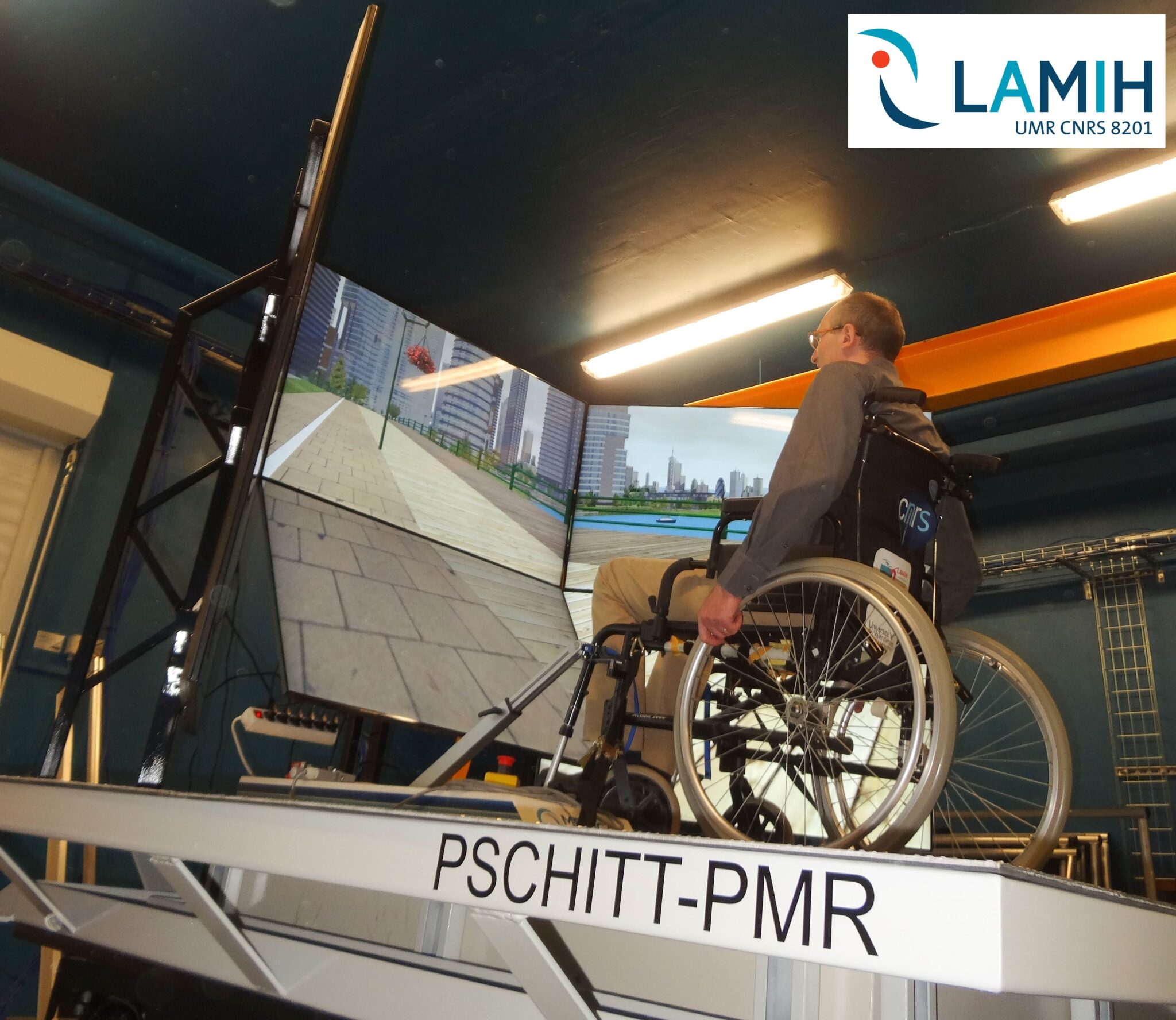The world of simulation and mobility research is constantly developing, particularly due to technological innovations and collaborative platforms. The PSCHITT project, led by a team of engineers and researchers from the Polytechnic University of the Hauts-de-France, is a prime example. Let’s explore the projects and advances of this initiative, highlighting the testimonials of Jérôme Floris, Gerald Conreur and Thierry Poulain.
To fully understand the progress of the PSCHITT project, it’s important to get to know the team members. Jérôme Floris, design engineer, focuses mainly on the Sherpa simulator. He has also contributed to teaching on the AVSimulation’s compact simulator SimEASY with Serge Debernard, Director of the Automatic Control Department at INSA Hauts-de-France, and works on various projects such as the DS7. Gerald Conreur, research engineer at CNRS, is in charge of the PSCHITT multimodal platform. They use SCANeR, AVSimulation software, for simulations ranging from wheelchairs to tram-trains. Finally, Thierry Poulain, research engineer who works closely with the PSCHITT platform, in particular on SCANeR environments.
The PSCHITT platform, an acronym for “Collaborative Hybrid Intermodal Land Transport Simulation Platform “ or in french “Plateforme de Simulation Collaborative Hybride Intermodale en Transport Terrestre”, brings together several ambitious projects. Since its launch in 2016 at the Polytechnic University of the Hauts-de-France, it has integrated various simulation tools to meet specific needs:
– Tram-Train Simulation: Using software for railway simulation, initially based on an Oktal product.
– Wheelchair simulation (Pschitt PMR): Creation of a simulator to study the mobility of wheelchair users in a virtual environment.
– Pedestrian Simulation (Pschitt Pédestrian): A project under development to model pedestrian walking.
These projects are based on SCANeR, the simulation software developed by AVSimulation, the team has been using since 1997. Their experience with SCANeR has enabled them to develop customized models for a variety of needs, from automotive simulation with Sherpa to wheelchair mobility.
The SCANeR tool was chosen by the team for several key reasons. The flexibility of SCANeR means that modules can be added and removed, customizing the simulation to specific research needs. Then, their long experience with SCANeR facilitates its use without wasting time on new developments. And finally, the openness of the tool means that it can be used to meet a wide variety of unforeseen needs, often applicable in a research context.
The PSCHITT project is not limited to research, but also plays a crucial role in teaching. For example, at INSA, an integrative project has been set up for fifth-year students in the Industrial and Automatic Computing engineering specialization. This formative, hands-on project enables students to work in teams and understand the technical and collaborative challenges involved in developing autonomous vehicles. Their task is to develop ADAS on Matlab using a human-centered approach, then to test them on the SimEasy mini-simulator before eventually transferring them to vehicles equipped by INSA’s Vehicles division of futur and electromobility.
One of the most inspiring aspects of the PSCHITT project is its commitment to improving mobility for people with disabilities. The Pschitt PMR platform is a prime example of the team’s efforts to improve mobility for people with disabilities. This simulator enables wheelchair movements to be tested and evaluated in a variety of controlled environments, providing valuable data for biomechanical research and the development of assistive tools.
The Pschitt PMR project also plays an important role in raising public awareness of disability-related challenges. In collaboration with associations and research organizations, the team regularly presents its work at conferences and events, contributing to a better understanding of the needs and possible innovations for people with disabilities.
The PSCHITT project, based on the expertise and passion of its engineers and researchers at the Université Polytechnique Hauts-de-France, represents a significant breakthrough in the field of simulation and mobility. By combining advanced simulation tools like SCANeR with innovative approaches, they are creating practical, realistic solutions to improve the daily lives of people with disabilities, while training the next generation of engineers to tackle similar challenges.


